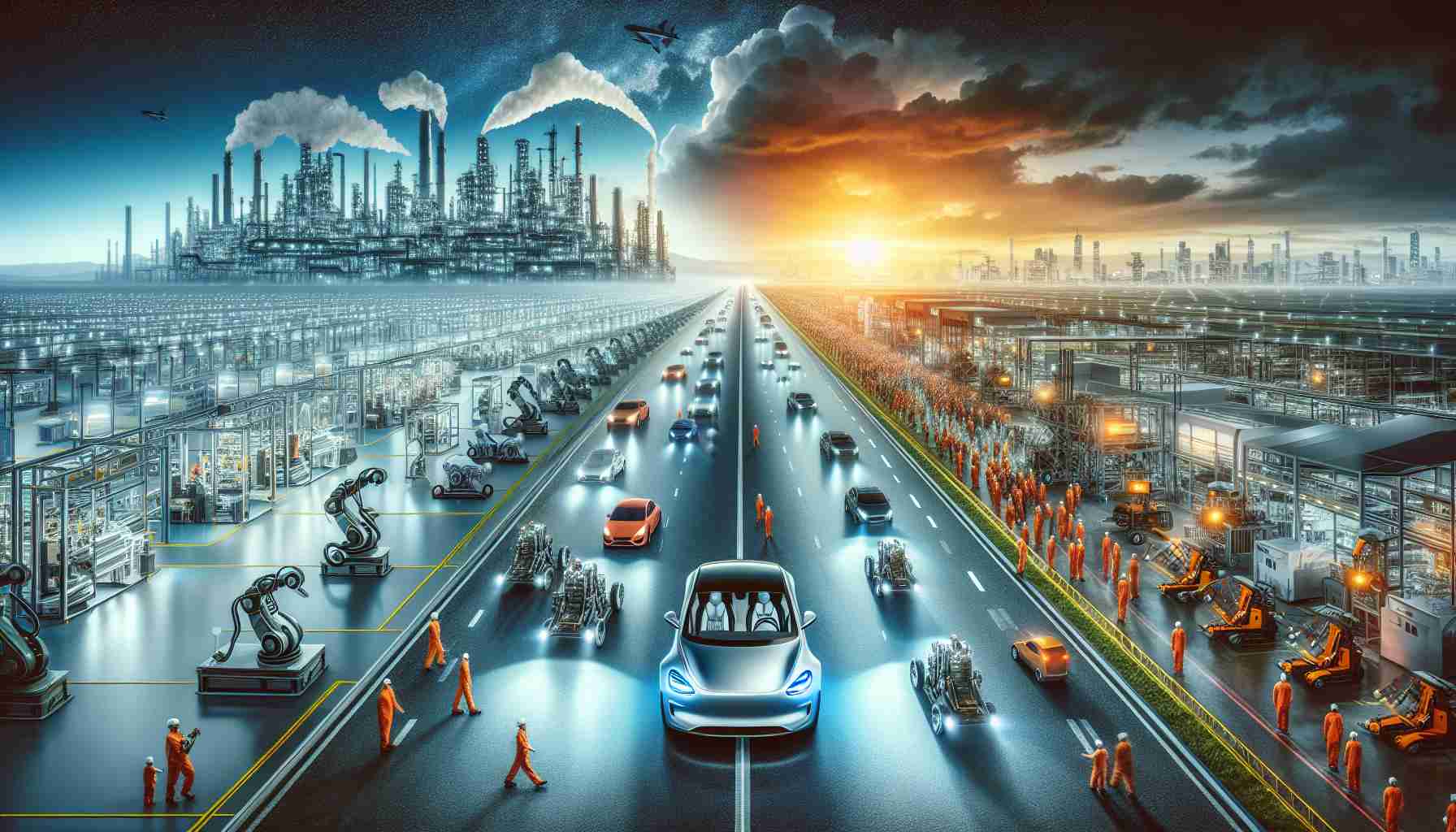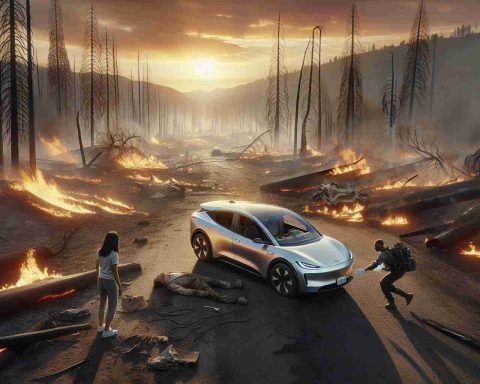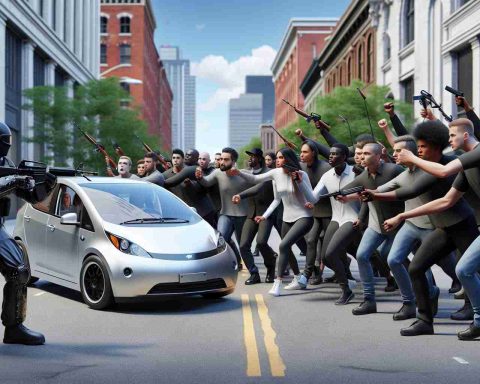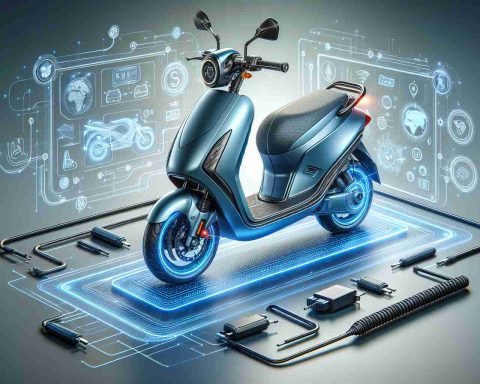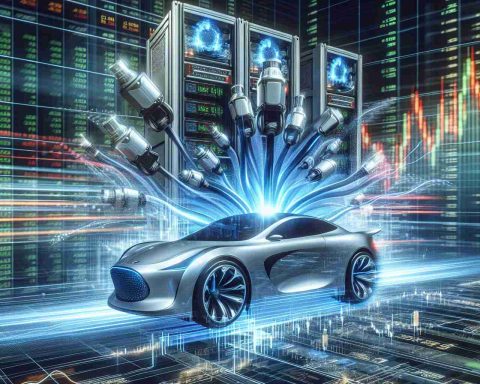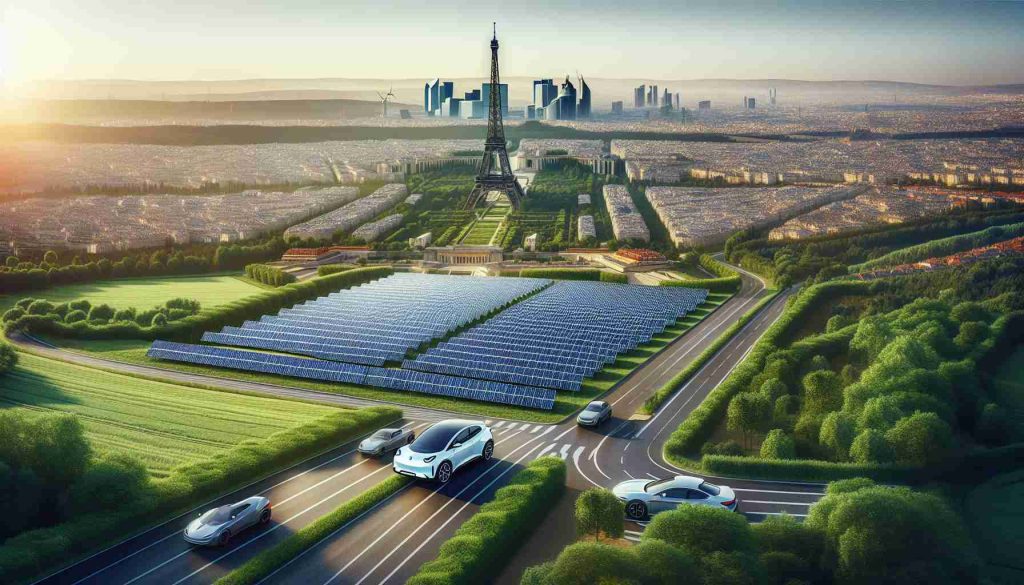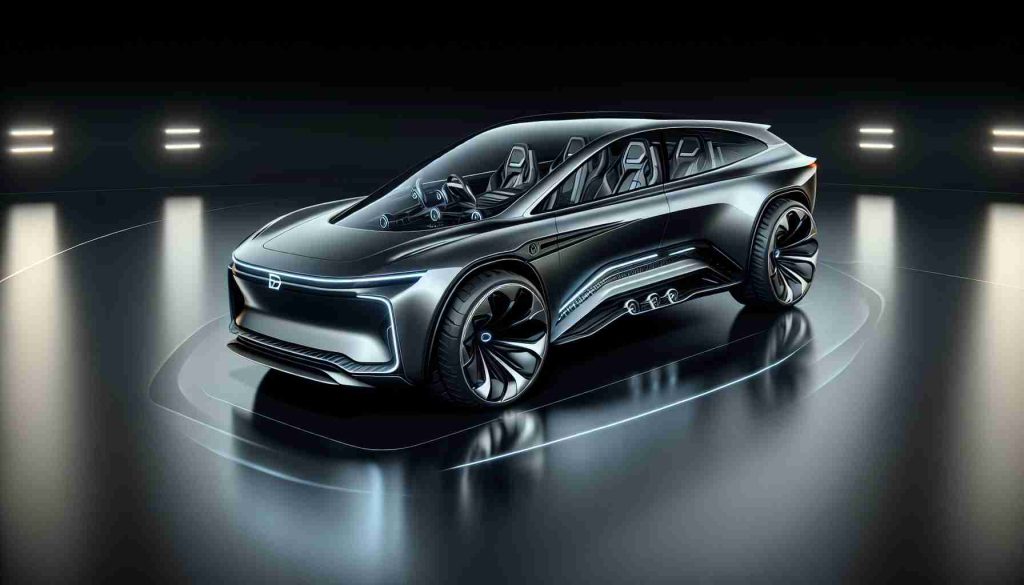- Rivian’s manufacturing plant in Normal, Illinois, produces electric vehicles every three minutes, highlighting technological and craft advancements.
- At the Chicago Auto Show, Rivian showcased its distinct R1T pickup and R1S SUV, drawing attention with their unique design elements and appeal as adventurous companions.
- RJ Scaringe, Rivian’s founder, leads the company’s innovative production approach, combining human skill with robotic precision.
- Rivian plans to expand its lineup with the affordable R2 midsize SUV and the futuristic R3, anticipated for 2027 release.
- With less than 10% of new car sales being electric, Rivian aims to ignite a movement by integrating style with sustainability.
- Rivian is not just manufacturing vehicles but is actively redefining the future of transportation and championing the transition to electric vehicles.
Beneath expansive skies in Normal, Illinois, a revolution hums quietly to life every three minutes. Within Rivian’s immense manufacturing plant, vehicles roll off the line, each one an invitation to adventure. From battery to vehicle, a mesmerizing symphony of technology and craftsmanship unfolds, blending human ingenuity with robotic precision.
Rivian has earned its spot in the EV spotlight, recently stepping into the limelight at the Chicago Auto Show. With its distinct stadium-shaped headlights, Rivian’s lineup—including the robust R1T pickup and the versatile R1S SUV—captures attention and fuels imaginations. The vehicles are more than mere transports; they’re companions on journeys meant to be photographed and remembered.
The mastermind behind this ambitious endeavor, RJ Scaringe, relishes orchestrating the factory’s evolving choreography. As he descends into the pulsating heart of activity, it is clear this is his sanctuary. Here, engineers and artisans work in unison, continually refining the process, and driving innovation beyond convention.
As Rivian’s empire expands, anticipation builds for the imminent R2—a more affordable midsize SUV—and the future-forward R3, set to arrive in 2027. At the auto show, Rivian isn’t just showcasing vehicles; it’s igniting imaginations and redefining expectations in a world where less than 10% of new car sales are electric.
Rivian’s ethos is not just about transforming transportation; it’s about sparking a movement—one driven by a passion for pioneering change. As electric becomes the norm, Rivian stands at the helm, championing a future where sustainability and style intersect seamlessly. In the heartland of America, beneath a Normal sky, the future is quietly being built, one EV at a time.
Electric Dreams: Rivian’s Revolutionary Rise in the Automotive Industry
Rivian’s Journey: From Startup to EV Pioneer
Rivian has quickly risen as a major player in the electric vehicle (EV) market. The company’s notable presence at the Chicago Auto Show highlights its commitment to innovation and sustainability. Rivian’s products, particularly the R1T pickup and R1S SUV, offer cutting-edge design combined with practical functionality.
Pros and Cons of Rivian EVs
Pros:
– Innovative Design: Unique features like stadium-shaped headlights and a gear tunnel in the R1T.
– Off-Road Capabilities: Both models are equipped for adventurous terrains.
– Sustainability Commitment: Focuses on eco-friendly manufacturing and minimal carbon footprint.
Cons:
– High Price Point: Current models are priced at a premium, impacting affordability.
– Infrastructure Challenges: Charging station availability can be limited in certain areas.
Market Trends and Forecasts
The EV market is expected to witness robust growth, driven by environmental consciousness and technological advancements. Rivian’s introduction of the R2, a more affordable midsize SUV, and the anticipated R3 model by 2027 suggest strategic expansion to capture a broader audience.
Innovations and Features
Rivian vehicles are packed with innovations, such as:
– Advanced Battery Technology: Offers extended range and quick charging capabilities.
– Autonomous Driving Features: Includes driver-assistance systems for enhanced safety.
– Modular Architecture: Allows for customization and future-proofing against new technologies.
Use Cases and Limitations
Rivian’s vehicles are ideal for nature enthusiasts and those requiring robust utility. However, they currently face limitations like the still-developing charging infrastructure and software refinements for autonomous features.
Pricing and Market Analysis
Rivian’s vehicles, while premium-priced, aim to provide value through unique features. The EV market is highly competitive with major automakers like Tesla and traditional manufacturers like Ford and GM entering the space.
Rivian and Sustainability
Rivian’s commitment to sustainability extends beyond vehicles to include eco-friendly manufacturing processes and renewable energy deployment at facilities.
Important Questions Addressed
– How does Rivian differentiate itself from competitors? Through innovative designs, sustainability focus, and adventurous brand appeal.
– What are the key challenges for Rivian? Market competitiveness, production scaling, and infrastructure development.
Suggested Related Links
For more information, you can visit:
– Rivian: Explore Rivian’s products and the brand’s vision for the future.
By continuing to innovate and expand, Rivian is poised to be a significant force in transforming the automotive landscape toward a more sustainable future.
